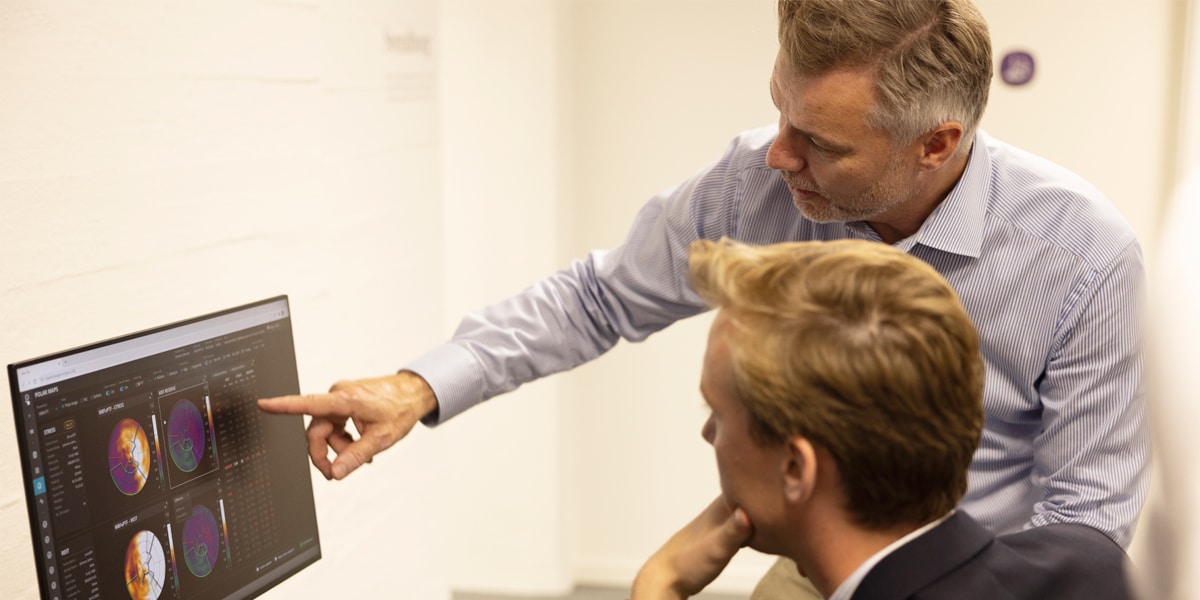Today, MedTrace Pharma A/S announce that the U.S. Patent and Trademark Office issued a patent to MedTrace for the company’s method for diagnosing the human heart. The patent protects MedTrace’s unique way of modelling the human heart via PET flow signals. The method, an algorithm, is the foundation of aQuant, the name of the company’s software currently under development.

MedTrace also has an automated manufacturing system for producing, dosing, and infusing patients with 15O-water during a PET exam. 15O-water manufactured by the automated manufacturing system is subject to an ongoing Phase 3 trial. With the manufacturing system for dosing and infusing 15O-water and the software for quantifying the perfusion of the heart, the company aims to make 15O-water available in clinical practice.
Rune Wiik Kristensen, co-founder, COO and U.S. Vice President at MedTrace, is thrilled that the company is now officially recognized for its unique way of diagnosing the heart.
-We are thrilled that the U.S. Patent and Trademark Office recognizes the innovativeness of our scientists, and the fact that the invention has been reduced to practice. This has great significance, and is a milestone on MedTrace’s journey to unleash the potential of cardiac imaging offered by 15O-water, says Rune Wiik Kristensen, who goes on to explain:
– What makes this patent so important is it´s robustness. We are in the realm of quantification of blood flow and perfusion, and the clinical environment expects us to provide robust and reliable methodologies that are easy to use. It really is a thing of beauty and elegance created here! The aQuant software is on track for completion of the development phase, and after the validation is completed, we will push for market approval in the U.S. and EU.
MedTrace expects that the new software will fully automate the entire analysis and image generation of the heart via PET flow, and only selective user quality control should be required.
Hendrik “Hans” Harms, PhD, and Senior Scientist at MedTrace, and Jens Soerensen, Professor and Clinical Advisor to MedTrace, are the originators of the now patented method. Harms developed the essential concept for a new way to calculate the perfusion of the heart via 15O-water PET.
– As a researcher in healthcare, the ultimate goal is that what you are doing affects patient management for the better. Seeing this patent granted is extremely satisfying, as it basically means that what we are doing is getting very real instead of just academic, says Hendrik “Hans” Harms.
Jens Soerensen agrees. He says:
– The patent allows us to unlock the full potential of what we’ve found during years of research and hopefully make these tools available for broad clinical use in cardiology. On a personal level, this is very satisfying.
MedTrace has also received an Intention to Grant of the corresponding patent from the European Patent Office and expects that both the European and the Chinese versions of the patent will issue in the first half of 2023.
MedTrace has filed several product patents via the World Intellectual Property Organization and is in the process of filing patents for applications of its equipment outside of cardiology.
Forward looking statement
This news release by MedTrace Pharma A/S (the “company”) includes “forward-looking statements” within the meaning of the safe harbor provisions of the U.S. Private Securities Litigation Reform Act of 1995. These statements are based upon the current beliefs and expectations of the company’s management and are subject to significant risks and uncertainties. The company offers no guarantees with respect to pipeline products that the products will receive the necessary regulatory approvals or that they will prove to be commercially successful. If underlying assumptions prove inaccurate or risks or uncertainties materialize, actual results may differ materially from those set forth in the forward-looking statements.